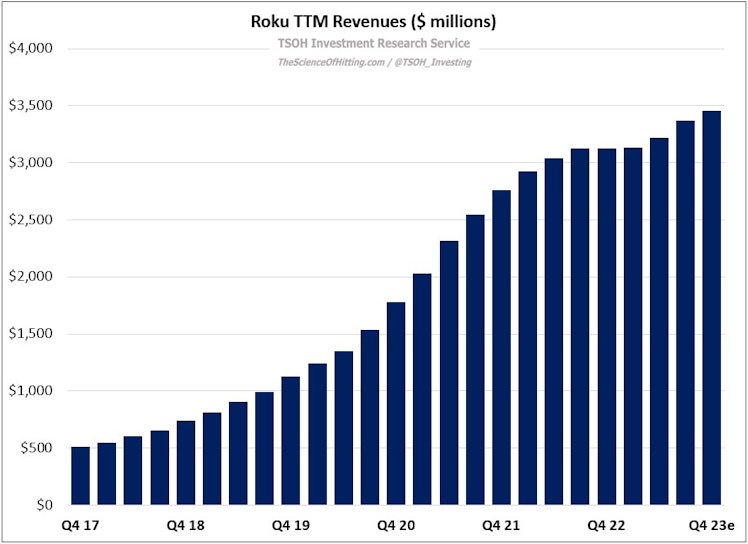Trending Assets
Top investors this month
Trending Assets
Top investors this month
"Surfing The Streaming Wave"
From “Focus First On Scale” (published in September 2022): “Roku caught a massive wave over the past decade, and smartly used that opportunity... The key question, in my opinion, is how to translate their current position into a defensible and profitable business over the long run… Despite impressive growth over the past five years, I think Roku holds a pretty difficult hand… As we get further clarity on Roku’s evolving relationship with leading content suppliers… it will provide an opportunity to test / update my conclusions.”
A lot has happened over the past 15 months.
Most notably, the streaming wars have cooled, with a shift in focus from growth to DTC profitability resulting in smaller content budgets and lower marketing spend. In addition, while the next leg of U.S. media industry consolidation has remained elusive, we’ve seen another change that is relevant for Roku: a growing emphasis on ad-supported (AVOD) services. This includes the free options - The Roku Channel (TRC), Tubi, and Pluto - as well as cheaper AVOD offerings from each of the major SVOD players.
The shift from linear to streaming has continued (even for those who still watch linear TV, the vMVPD’s are taking significant share). In addition, technological hardware advances march on, with cable set-top boxes and dongles quickly being replaced by connected TV’s (CTV’s). Both of those trends, which have supported Roku’s growth over the past 15 years, remain in full force. The financial output for the company has been impressive: Roku ended Q3 FY23 with 76 million active accounts, up >3x from five years ago.
In addition, the average Roku account now streams ~3.9 hours per day, up from ~2.9 hours per day in Q3 FY18. The combination of significant active accounts growth and a ~140% increase in average annual revenues per account (ARPA) led to TTM revenues in Q3 FY23 of $3.4 billion – a trailing five-year CAGR of +39% per annum. (Importantly, that reflects significantly outsized growth for Roku’s Platform revenues, which increased >50% p.a.)

thescienceofhitting.com
Surfing The Streaming Wave
From “Focus First On Scale” (published in September 2022): “Roku caught a massive wave over the past decade, and smartly used that opportunity...
Already have an account?